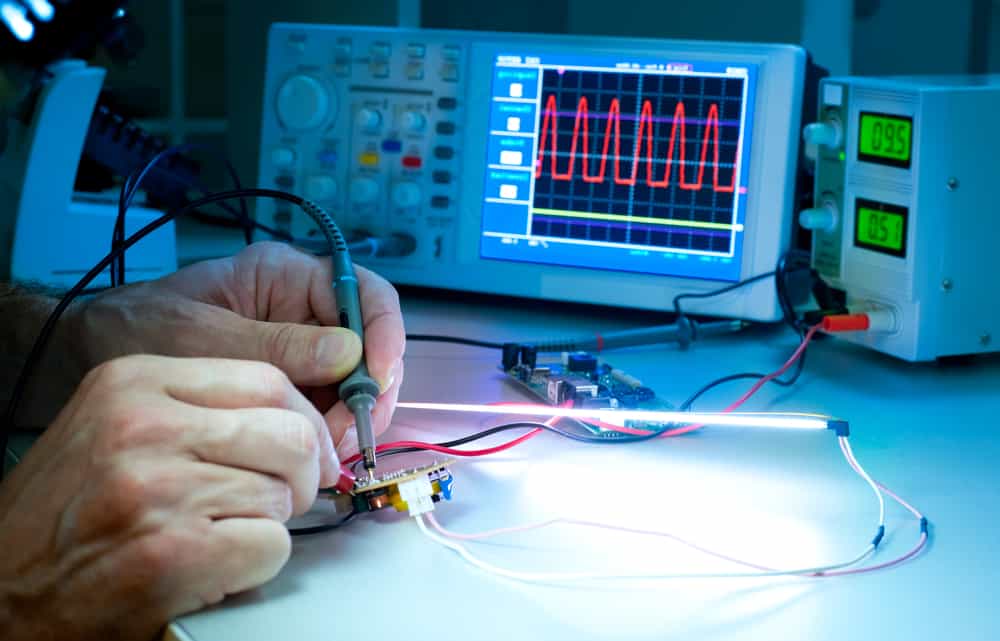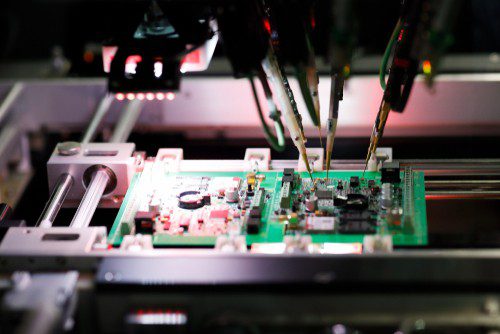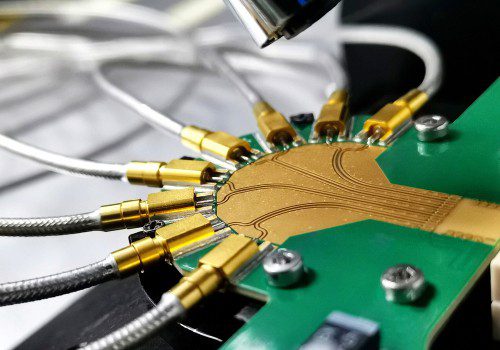
When you buy a new electronic product, you might not realize it has been subjected to a battery of tests, from the component level to the finished assembly. Some finished units may have been taken off the line and subjected to rigorous inspection to ensure quality control. For electronics manufacturers and assemblers, testing is a big investment, but for the end user, it ensures the product will have a long lifetime.
Everyone can understand the importance of testing electronic components, but whose responsibility is it to run these tests? Manufacturers do their best to remove faulty components from their production batches and designers may need to test components when investigating a product failure. Let’s look at this more deeply to see how designers can get through their testing requirements and ensure their products have a long lifetime.
The Importance of Testing Electronic Components
The importance of testing electronic components is indisputable. Electronic components must be tested before they make their way into a finished product. However, millions of electronic components are available on the market and are in active production at any time, and millions of units are produced per year. Obviously, it’s impossible for manufacturers to comprehensively test every component that comes off the production line.
Different electronics industry standards and safety regulations dictate specific test requirements and performance standards components should meet. In addition, certain standards and industries (e.g., IPC Class 3 products, medical devices, military, and aerospace) have much higher reliability requirements than are enforced on typical PCBs, and there are specific tests that need to be performed during PCB manufacturing to ensure component and board reliability.
While manufacturers do perform statistical process control and use random sampling to ensure their components are manufactured to specifications, more testing may be needed to ensure component reliability and high first-pass yield. The goal in testing electronic components focuses on four areas:
- Highly accelerated life testing (HALT) and stress screening (HASS): Used to identify components that will fail early before they are placed into a PCB assembly.
- Electrical testing: Used to verify components have the rated electrical specifications, and that a PCBA meets basic electrical requirements.
- Reliability testing: Performed on PCBAs and batches of components to verify ability to withstand extreme environments or mechanical loads.
- Functional testing: Normally performed by test engineers after a prototype is fabricated and received by the customer.
- Root cause of failure testing: Used to determine whether a failed board spin or prototype is due to a faulty component.
There are many types of tests that might be performed in each of these areas, and different tests are intended to investigate specific characteristics of different components. The table below summarizes who is responsible for performing tests in the above areas.
| HALT and HASS | Performed primarily by component manufacturers, but may also be performed by contract manufacturers on larger runs or when standards dictate. Independent labs may also perform this testing. |
| Electrical testing | Performed by component manufacturers in batches and by PCB manufacturers during board fabrication and assembly. |
| Reliability testing | Can be performed by component manufacturers, contract PCB manufacturers, or independent testing labs. |
| Functional and failure testing | Performed by board test engineers and independent test labs, both during prototyping and after deployment. |
HALT, HASS, and Reliability Testing
These areas of electronics testing are closely related, as they are all geared towards ensuring maximum possible lifetime for a finished PCBA. HALT and HASS tests can be performed for batches of components, as well as for finished PCBAs. The procedures and tests involved can be different, depending on the aspects of the product that need to be evaluated. Some typical tests include:
- Burn-in testing (thermal reliability and lifetime test)
- Vibration testing
- Shock testing (mechanical, thermal, or electrical)
- Cycled tests
- Electrical stress testing
- Any combination of the above areas
Electrical Testing During Manufacturing
Electrical testing can be performed during fabrication with automated testing equipment. This requires designing test points onto the bare board so automated probing equipment can access specific nets. At minimum, these tests will check for electrical connectivity in the bare PCB (locating opens and shorts) and finished PCBA. The designer needs to supply specific test data to the manufacturer, which may include some data from the component datasheet.

Flying probe machines can quickly scan multiple test points on a PCB to measure opens, shorts, and specific electrical values
Functional and Failure Testing By Board Test Engineers
Functional testing normally happens during prototyping, where the system is tested against performance requirements. In this case, the individual components are not tested, unless there is a failure on the board. At that point, the test engineer needs to determine the root cause of the board failure, which may be narrowed down to a specific component.
In this case, the individual components do need to be tested to verify a component was not the cause of failure. Oftentimes, an assembly defect will masquerade as a component failure, so be careful and do not assume your components burned out just because a board failed. The best way to confirm a component failure is to test it with the board powered up, then remove the component and test it in isolation. Be sure to consult the manufacturer’s datasheet for electrical ratings and functional specifications.

Prototypes and specialty components can be designed to interface with advanced test fixtures to give a test engineer access to critical nets and components on the board
Whenever you need to replace a component in your PCBA or to find datasheets to use for testing, you can use an electronics search engine like Ultra Librarian to find the component data you need. Ultra Librarian understands the importance of testing electronic components, lifecycle management, and providing data to users. You’ll have access to CAD models for your components and verified 3D models that can be imported into popular ECAD applications. You’ll also have access to sourcing information from worldwide distributors.
Working with Ultra Librarian sets up your team for success to ensure streamlined and error-free design, production, and sourcing. Register today for free.








